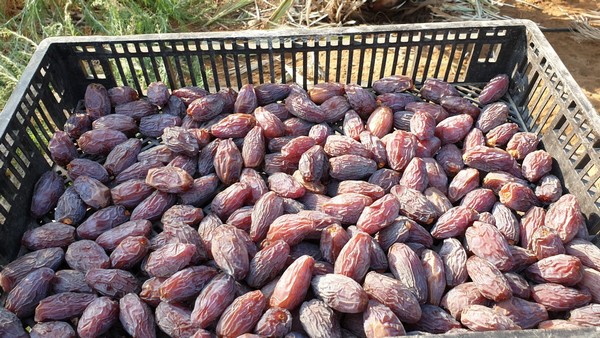Kilang Kurma: A Look Behind the Scenes of Date Processing

Kurma, revered for its taste, cultural significance, and potential health benefits, is a beloved fruit enjoyed worldwide. But have you ever stopped to think about the journey these delightful treats take before reaching your plate? This blog post takes you on a fascinating exploration of kilang kurma (date factories), unveiling the intricate processes that transform fresh dates into the delicious varieties we all know and love.
From Palm to Package: The Stages of Date Processing
Dates undergo a meticulous series of steps within the walls of a date factory:
-
Harvesting: The journey begins with the careful harvesting of dates from palm groves. Depending on the variety and desired ripeness, harvesting techniques might involve manual handpicking or mechanical aids.
-
Sorting and Cleaning: Harvested dates are meticulously sorted by hand or using specialized machinery to remove any unwanted debris, leaves, or immature fruits. They are then gently washed to remove dust and dirt.
-
Drying: This stage is crucial for preserving the dates. Traditional methods involve sun-drying, where dates are laid out on mats or screens under the hot sun for several days. Modern date factories might utilize dehydrators to control temperature and humidity for consistent drying.
-
Grading and Sizing: Once dried, dates are graded based on size, color, quality, and variety. This ensures consistent presentation and caters to different market preferences.
-
Pitting (Optional): For some date varieties, the pits are mechanically removed to create a more convenient eating experience.
-
Packaging: Dates are then packaged in various ways depending on the type of date, target market, and intended shelf life. Packaging can range from simple plastic bags to vacuum-sealed containers.
-
Quality Control: Throughout the processing stages, rigorous quality control measures are implemented to ensure the dates meet hygiene standards and international food safety regulations.
Tradition Meets Technology: Processing Methods in Date Factories
The processing methods employed in date factories can vary depending on factors like scale, budget, and desired outcome:
-
Traditional Techniques: Smaller-scale date factories might rely on traditional methods like sun-drying and manual sorting. These methods can be more labor-intensive but often result in dates with a more intense flavor profile.
-
Modern Advancements: Larger-scale ones often leverage technological advancements. Dehydrators ensure consistent drying conditions, while mechanical sorting and pitting can increase efficiency.
A Sweet Conclusion:
The next time you savor a delicious date, remember the dedication and meticulous processes that occur within the walls of a kilang kurma. From careful harvesting to stringent quality control, each stage ensures that dates reach consumers as delectable and safe treats. So, appreciate the artistry and technology behind these fascinating factories, and enjoy the delightful taste of dates with a newfound understanding of its journey from palm to plate!
Key Highlights:
- Kilang kurma (date factories) process dates through stages like harvesting, sorting, drying, grading, pitting (optional), packaging, and quality control.
- Traditional methods involve sun-drying and manual sorting, while modern date factories might utilize dehydrators and mechanical processes.
- Date factories prioritize hygiene standards and international food safety regulations.
- Appreciation for date factories deepens the enjoyment of dates taste and cultural significance.